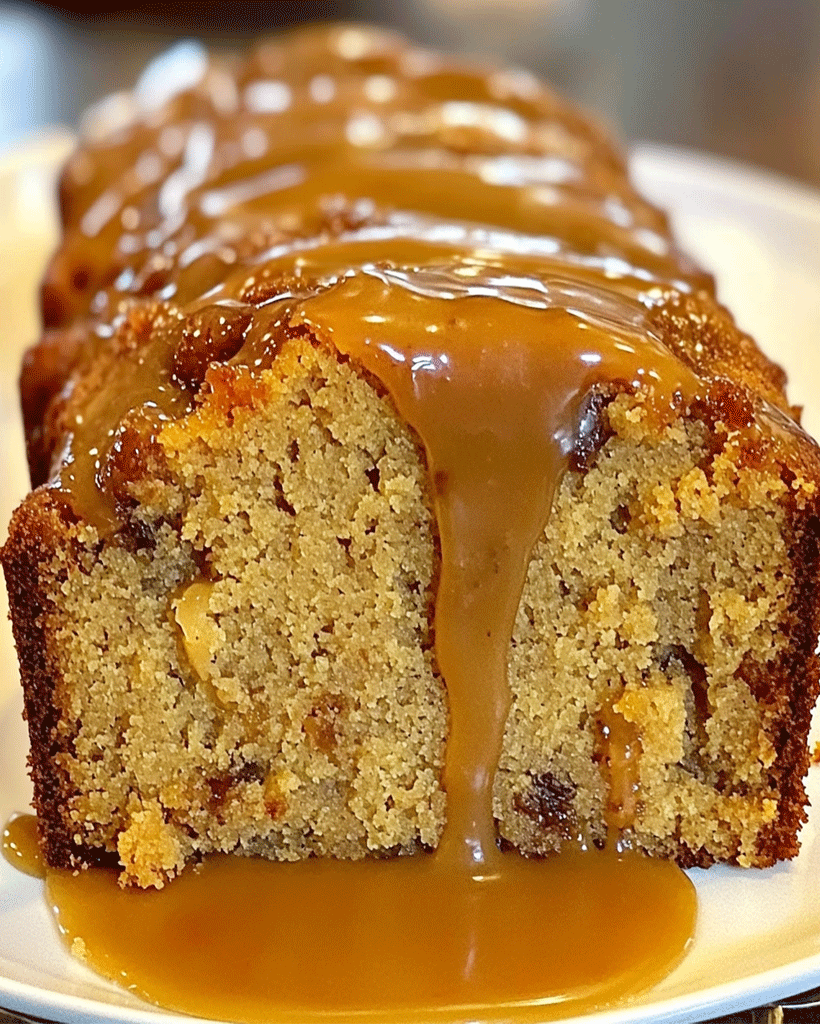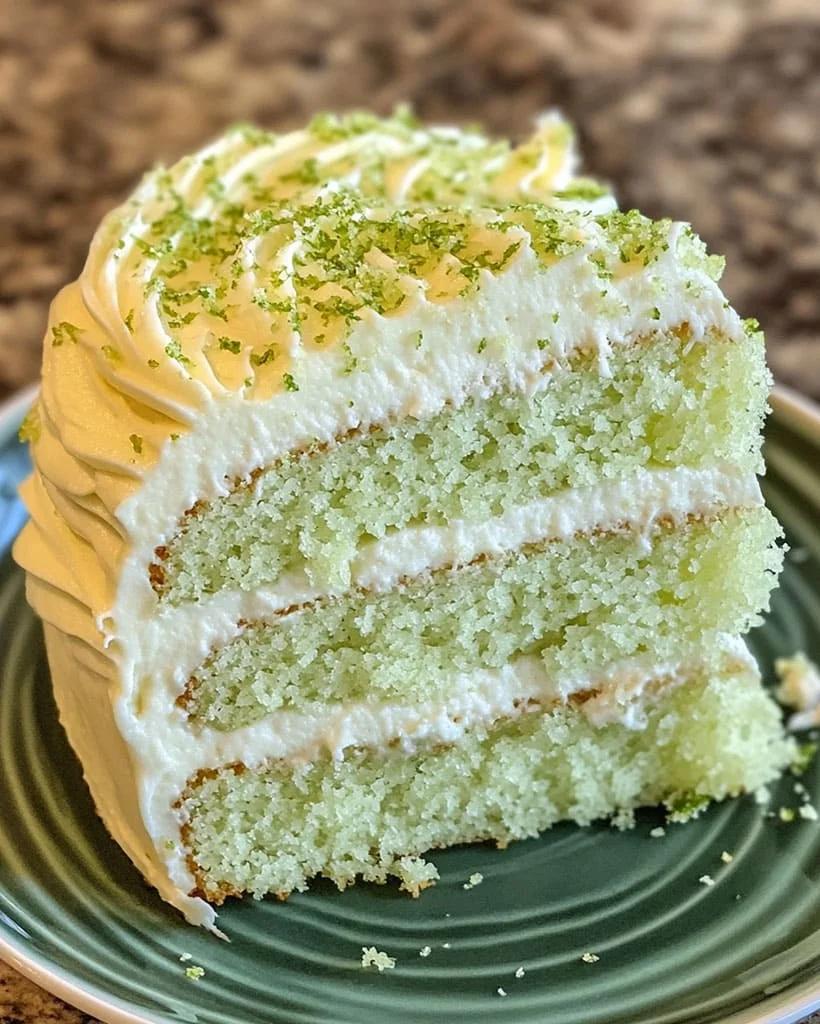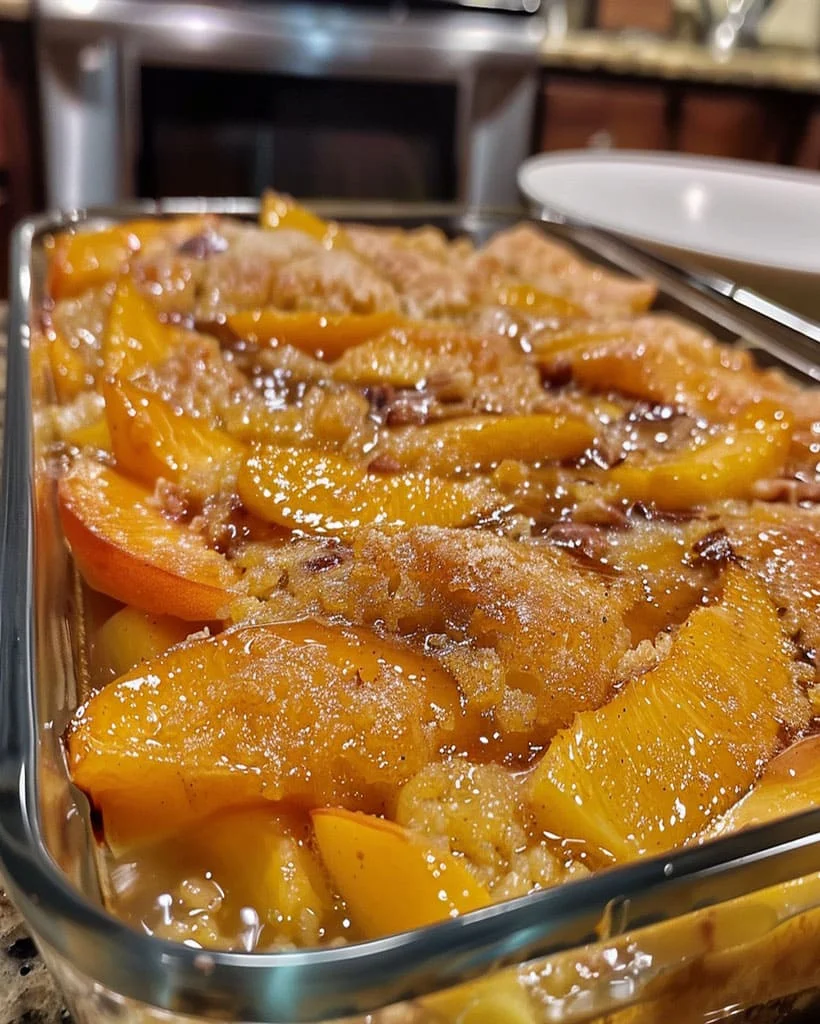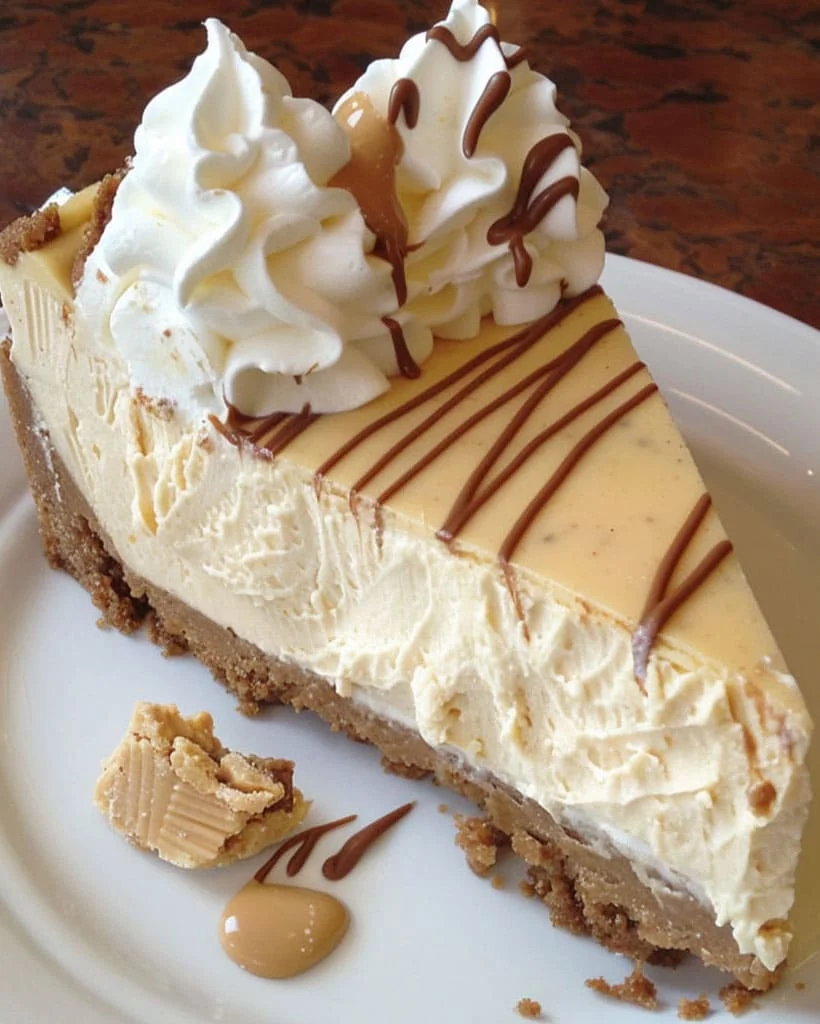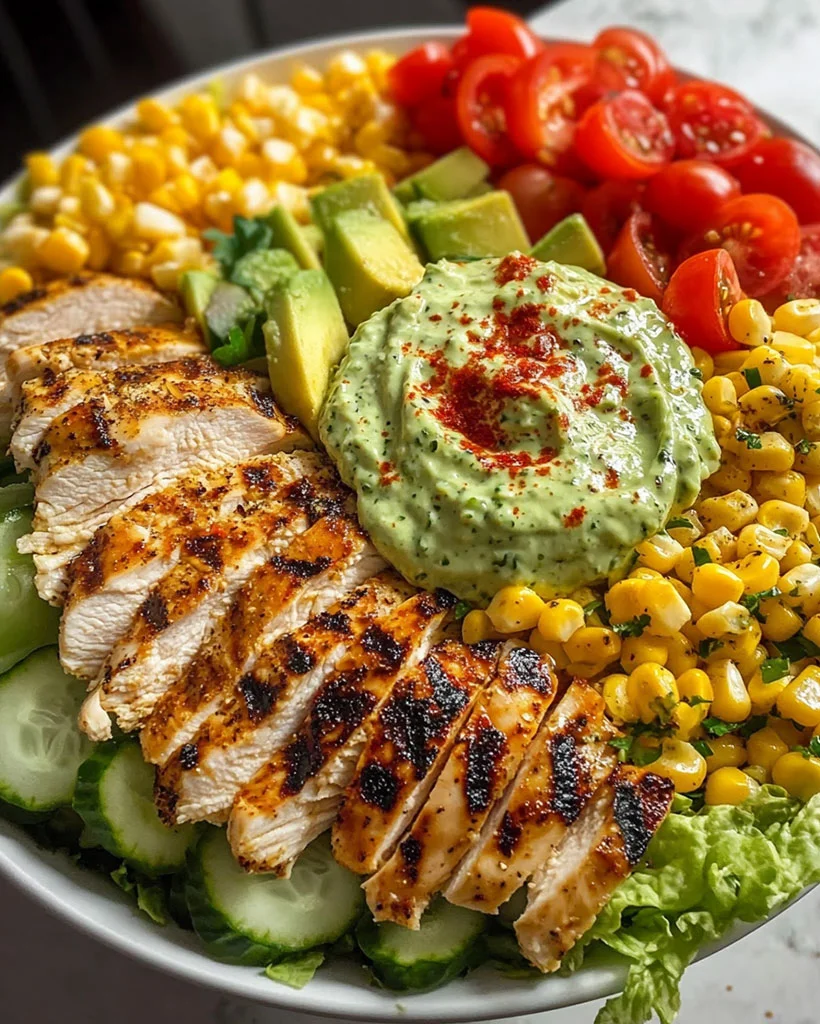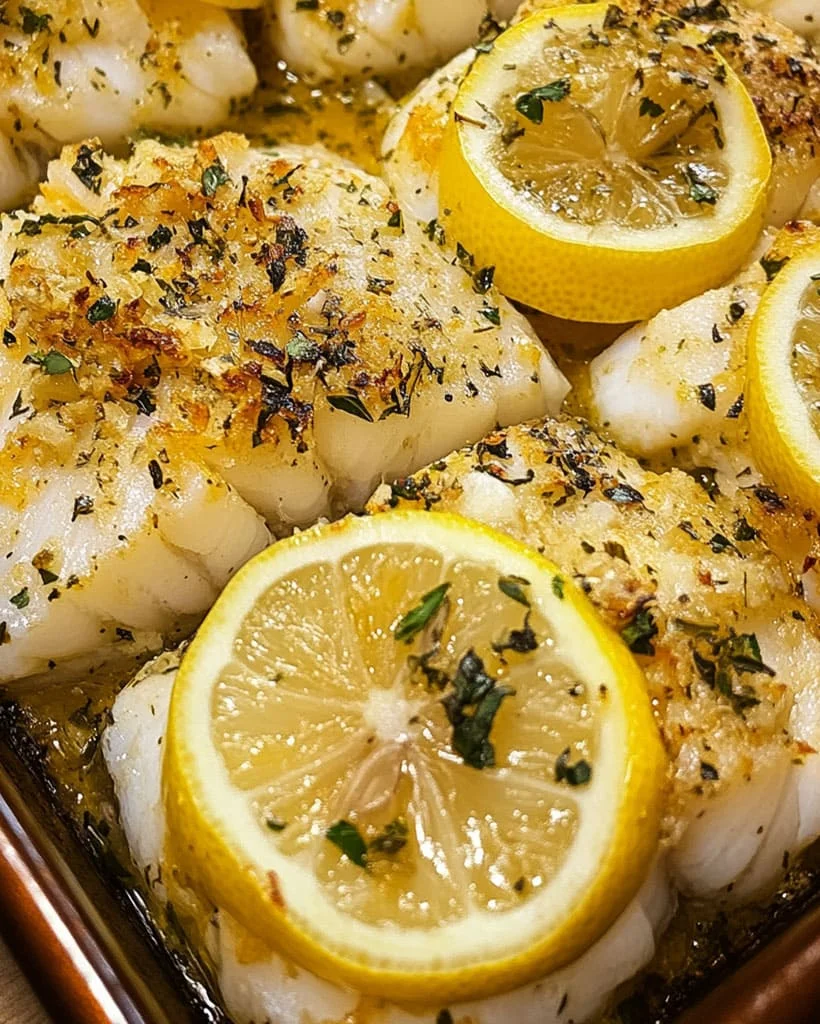Welcome to a delicious adventure in baking! Today, we’re diving into the world of rich, buttery flavors with a classic dessert: Brown Sugar Pound Cake. Perfectly moist, dense, and topped with a caramel glaze, this cake is an indulgent treat that’s easy to make and hard to resist. Whether you’re a seasoned baker or new to the kitchen, this Rich and Buttery Brown Sugar Pound Cake recipe will fill your home with a warm, comforting aroma. So, roll up your sleeves, gather your ingredients, and let’s get baking!
Introduction
The Brown Sugar Pound Cake is a beloved treat that has been a staple in Southern kitchens for generations. Known for its dense and buttery texture, this pound cake offers a delightful caramelized sweetness thanks to the use of brown sugar. Unlike traditional pound cakes, which use only granulated sugar, this recipe’s mix of light brown and granulated sugars brings depth to the flavor and a softer, more tender crumb. This cake is perfect for special occasions, family gatherings, or a cozy night in.
Ingredients for Brown Sugar Pound Cake
Gather the following ingredients for this Brown Sugar Pound Cake recipe. Having everything measured and ready makes the baking process smoother.
Cake Ingredients
- 1 cup unsalted butter – softened to room temperature
- 1 cup light brown sugar – packed for that caramelized flavor
- 1 cup granulated sugar
- 5 large eggs – at room temperature
- 2 cups all-purpose flour
- 1 tsp baking powder – adds just enough lift
- ½ tsp salt
- 1 tsp vanilla extract – enhances the flavor
- ½ cup whole milk – for moisture and richness
Caramel Glaze Ingredients
- ½ cup light brown sugar – packed
- ¼ cup butter
- 2 tbsp heavy cream – for a creamy consistency
- ½ tsp vanilla extract
Substitution Tips: If you’re lactose intolerant, substitute with a plant-based milk like almond or oat milk and use dairy-free butter.
How to Make Brown Sugar Pound Cake – Step by Step
This step-by-step guide will show you how to make this Brown Sugar Pound Cake from scratch. Let’s start mixing and baking!
Step 1: Preheat the Oven and Prepare the Pan
- Preheat your oven to 325°F (163°C).
- Grease and flour a bundt or loaf pan to ensure the cake doesn’t stick.
2: Cream the Butter and Sugars
- In a large mixing bowl, combine 1 cup of unsalted butter, 1 cup of light brown sugar, and 1 cup of granulated sugar.
- Use an electric mixer on medium speed to beat until light and fluffy, about 3-5 minutes. This step is crucial for a soft and tender crumb!
3: Add the Eggs
- Add 5 large eggs one at a time, mixing well after each addition. This ensures each egg is fully incorporated, keeping the batter smooth.
4: Mix the Dry Ingredients
- In a separate bowl, whisk together 2 cups of all-purpose flour, 1 tsp of baking powder, and ½ tsp of salt.
5: Combine Wet and Dry Ingredients
- Gradually add the dry ingredients to the wet mixture, alternating with ½ cup of whole milk. Start and end with the dry ingredients to create a balanced batter.
- Stir in 1 tsp of vanilla extract to enhance the flavor.
6: Bake the Pound Cake
- Pour the batter into the prepared pan, spreading it evenly.
- Bake for 65-75 minutes or until a toothpick inserted in the center comes out clean.
- Let the cake cool in the pan for about 15 minutes, then invert it onto a wire rack to cool completely.
7: Make the Caramel Glaze
- In a small saucepan, combine ½ cup light brown sugar, ¼ cup butter, and 2 tbsp heavy cream.
- Cook over medium heat, stirring constantly, until the mixture is smooth and thickened, about 3-4 minutes.
- Remove from heat and stir in ½ tsp of vanilla extract.
- Drizzle the caramel glaze over the cooled pound cake.
Helpful Tips for Brown Sugar Pound Cake
For a flawless Brown Sugar Pound Cake, keep these helpful tips in mind:
- Use Room Temperature Ingredients: This helps the butter and eggs blend more smoothly, resulting in a tender cake.
- Don’t Overmix the Batter: Once you add the flour, mix just until combined to avoid a dense cake.
- Test for Doneness: Insert a toothpick in the center; if it comes out clean, the cake is ready.
Cooking Tips for the Best Brown Sugar Pound Cake
Achieving the perfect Brown Sugar Pound Cake involves a few key techniques:
- Creaming Butter and Sugar: Take your time with this step, as it creates a fluffy base.
- Use High-Quality Vanilla Extract: Vanilla enhances the caramel notes in the cake, so choose a high-quality brand for the best flavor.
- Cool Before Glazing: Ensure the cake is fully cooled, or the glaze may melt and slide off.
Serving Suggestions for Brown Sugar Pound Cake
This Brown Sugar Pound Cake pairs wonderfully with:
- Vanilla Ice Cream – for a classic touch
- Fresh Berries – strawberries or raspberries add a pop of color and flavor
- Whipped Cream – a light, fluffy topping that complements the cake’s richness
Nutritional Information
This dessert is decadent but worth every bite! Here’s an approximate nutritional breakdown per slice.
- Calories: 380
- Fat: 18g
- Carbohydrates: 48g
- Protein: 5g
Note: These values are estimates and may vary based on portion size.
Storage and Leftovers
To store your Brown Sugar Pound Cake:
- Room Temperature: Store covered at room temperature for up to 3 days.
- Refrigerator: Place in an airtight container and refrigerate for up to a week.
- Freezer: Wrap tightly in plastic wrap and store in the freezer for up to 3 months.
For reheating, simply warm a slice in the microwave for 10-15 seconds to enjoy the fresh-from-the-oven taste.
Frequently Asked Questions (FAQs)
- Can I use dark brown sugar instead of light?
- Yes, but keep in mind that dark brown sugar will create a deeper, more intense caramel flavor.
- Can I make this cake dairy-free?
- Yes, substitute the butter with a dairy-free option and use plant-based milk.
- Why is my pound cake dense?
- Overmixing the batter or not properly creaming the butter and sugar can lead to a denser cake.
- What other pans can I use?
- Besides a bundt pan, you can use a loaf pan or even cupcake tins for mini pound cakes.
Related Recipes
If you loved this recipe, you might also enjoy:
Conclusion
Thank you for joining me in making this delicious Rich and Buttery Brown Sugar Pound Cake! With its tender crumb and caramel glaze, this cake is sure to become a favorite. Try it for your next gathering or as a special treat for yourself. Don’t forget to leave a comment below with your thoughts or any creative twists you tried. Happy baking!
Print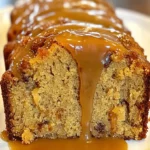
Brown Sugar Pound Cake: Rich & Buttery Classic Dessert
Description
Welcome to a delicious adventure in baking! Today, we’re diving into the world of rich, buttery flavors with a classic dessert: Brown Sugar Pound Cake. Perfectly moist, dense, and topped with a caramel glaze, this cake is an indulgent treat that’s easy to make and hard to resist. Whether you’re a seasoned baker or new to the kitchen, this Rich and Buttery Brown Sugar Pound Cake recipe will fill your home with a warm, comforting aroma. So, roll up your sleeves, gather your ingredients, and let’s get baking!
Ingredients
Cake Ingredients
- 1 cup unsalted butter – softened to room temperature
- 1 cup light brown sugar – packed for that caramelized flavor
- 1 cup granulated sugar
- 5 large eggs – at room temperature
- 2 cups all-purpose flour
- 1 tsp baking powder – adds just enough lift
- ½ tsp salt
- 1 tsp vanilla extract – enhances the flavor
- ½ cup whole milk – for moisture and richness
Caramel Glaze Ingredients
- ½ cup light brown sugar – packed
- ¼ cup butter
- 2 tbsp heavy cream – for a creamy consistency
- ½ tsp vanilla extract
Substitution Tips: If you’re lactose intolerant, substitute with a plant-based milk like almond or oat milk and use dairy-free butter.
Instructions
Step 1: Preheat the Oven and Prepare the Pan
- Preheat your oven to 325°F (163°C).
- Grease and flour a bundt or loaf pan to ensure the cake doesn’t stick.
Step 2: Cream the Butter and Sugars
- In a large mixing bowl, combine 1 cup of unsalted butter, 1 cup of light brown sugar, and 1 cup of granulated sugar.
- Use an electric mixer on medium speed to beat until light and fluffy, about 3-5 minutes. This step is crucial for a soft and tender crumb!
Step 3: Add the Eggs
- Add 5 large eggs one at a time, mixing well after each addition. This ensures each egg is fully incorporated, keeping the batter smooth.
Step 4: Mix the Dry Ingredients
- In a separate bowl, whisk together 2 cups of all-purpose flour, 1 tsp of baking powder, and ½ tsp of salt.
Step 5: Combine Wet and Dry Ingredients
- Gradually add the dry ingredients to the wet mixture, alternating with ½ cup of whole milk. Start and end with the dry ingredients to create a balanced batter.
- Stir in 1 tsp of vanilla extract to enhance the flavor.
Step 6: Bake the Pound Cake
- Pour the batter into the prepared pan, spreading it evenly.
- Bake for 65-75 minutes or until a toothpick inserted in the center comes out clean.
- Let the cake cool in the pan for about 15 minutes, then invert it onto a wire rack to cool completely.
Step 7: Make the Caramel Glaze
- In a small saucepan, combine ½ cup light brown sugar, ¼ cup butter, and 2 tbsp heavy cream.
- Cook over medium heat, stirring constantly, until the mixture is smooth and thickened, about 3-4 minutes.
- Remove from heat and stir in ½ tsp of vanilla extract.
- Drizzle the caramel glaze over the cooled pound cake.
Equipment

2Pcs Heart Shape Cake Pans, Aluminum Heart Cake Mold, Reusable 10 inch
Buy Now →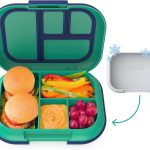
Kids Chill Leak-Proof Lunch Box – Included Reusable Ice Pack Keeps Food Cold
Buy Now →Notes
- Use Room Temperature Ingredients: This helps the butter and eggs blend more smoothly, resulting in a tender cake.
- Don’t Overmix the Batter: Once you add the flour, mix just until combined to avoid a dense cake.
- Test for Doneness: Insert a toothpick in the center; if it comes out clean, the cake is ready.
